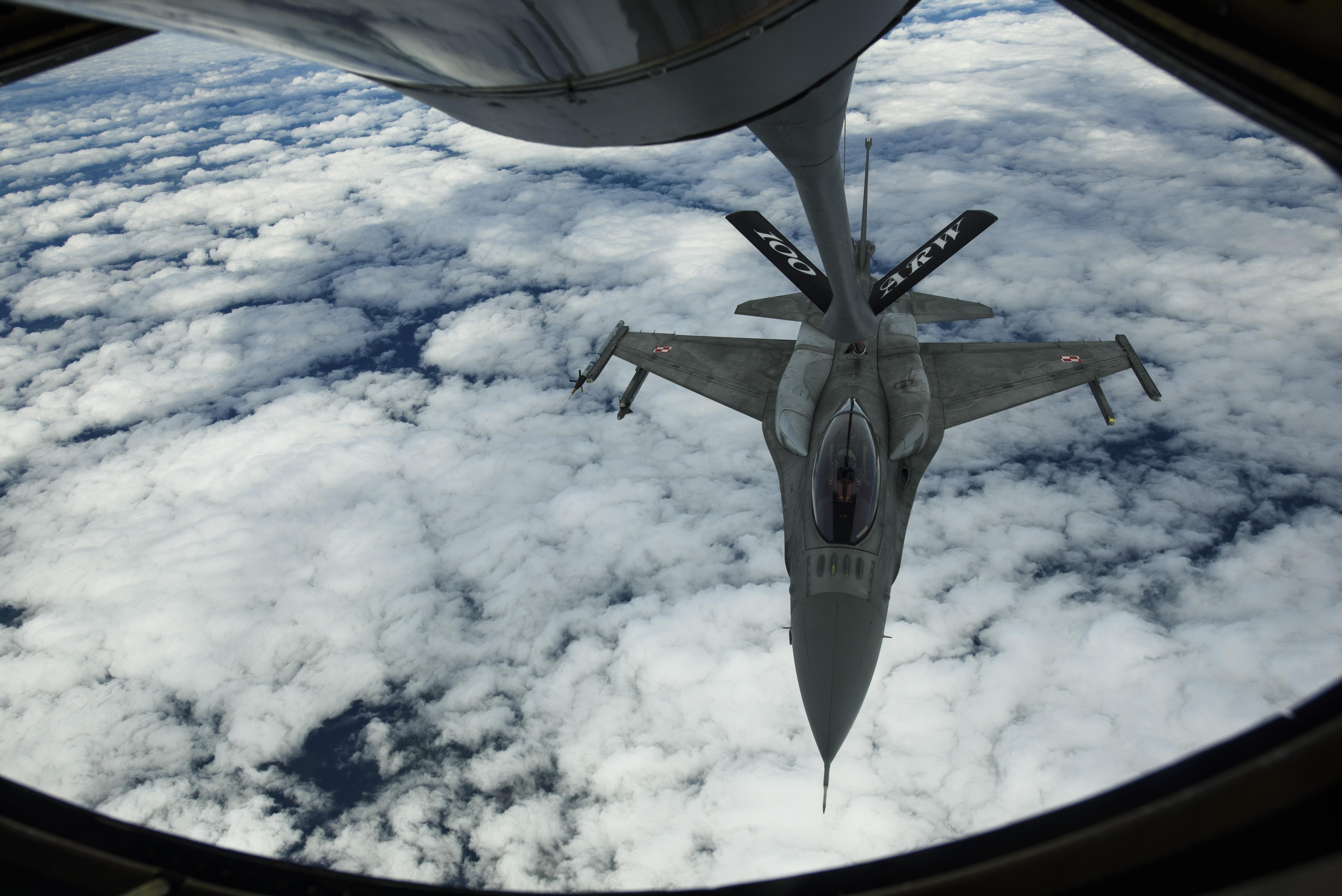A Polish air force F-16 Fighting Falcon refuels from a USAF KC-135R Stratotanker over Latvia, June 14, 2017. US Air Force photo by SSgt. Jonathan Snyder.
Les Bourget, France—The 29 nations that are members of the NATO alliance pledge to spend two percent of their national gross domestic product on defense. Few do, but all indicate that this is a goal, and US President Donald Trump has recently made it clear that he expects more of a contribution from allies benefitting from the US security umbrella. There are many ways America’s allies can increase their defense spending, but if nations honestly weigh their options, they will find US-built equipment generally offers them the most total value, said Remy Nathan, vice president for international affairs at the Aerospace Industries Association.
When it comes to providing “the best technology at the best price,” US products win “across the board,” Nathan said in an interview with Air Force Magazine at the Paris Air Show. It’s not just the initial purchase that matters either, he noted, as the American value advantage increases when you factor in lifecycle support and maintenance expenses, he said. The benefits are not just financial either, as companies enter into long-term relationships with the United States and ensure close partnership and interoperability when they buy American. Partners are “in a position to join and win battles,” he noted.
The US economy, meanwhile, benefits from these export sales through a strengthened industrial base, additional funding for innovation, and additional well-paying, highly skilled jobs. Earlier this week, Heidi Grant, the Air Force’s undersecretary for international affairs, noted that she had never seen as much interest in US fighter aircraft as she sees right now. Grant cited the F-35 and F-16 (both new and used) as aircraft that are generating particular interest.
Nations that buy F-16s today will likely be working closely with the United States for decades to come, as has been seen in nations around the world since the 1970s. F-35 partner nations may be on the cusp of half-century relationships.
Nathan noted that “Europe has unique security needs,” but there are both advanced and “80 percent solutions” available that nations can use to address their security demands while remaining within their technical comfort level—and budgets.
US military exports are approved through a complex interagency process, however, and AIA exists in part to advocate for the US aerospace industry. To that end, the association advocates for clarifying, simplifying, and streamlining the sometimes balky export approval process. You can have an export process that still safely defends US interests with less red tape, Nathan said. There was a tipping point about eight years ago, after the US financial crisis, when it became clear the US would be limited in its ability to “go it alone” in combat operations. At that point, the US government started to view security cooperation as a norm, not an “enhancement,” he said.
Nathan said there has been clear leadership within the Air Force, at the Defense Security Cooperation Agency, and elsewhere pushing to make the system more efficient. Ultimately, he said, it is the US government that gets to decide what is approved for export and what is not, but if the government sets clear priorities and communicates them clearly to industry, it is the nation that benefits. There is danger, on the other hand, in needlessly slow export approvals in cases where the answer is ultimately going to be, “yes.” Customers may choose to buy elsewhere, or be left without the military systems they need at the time they need them.
